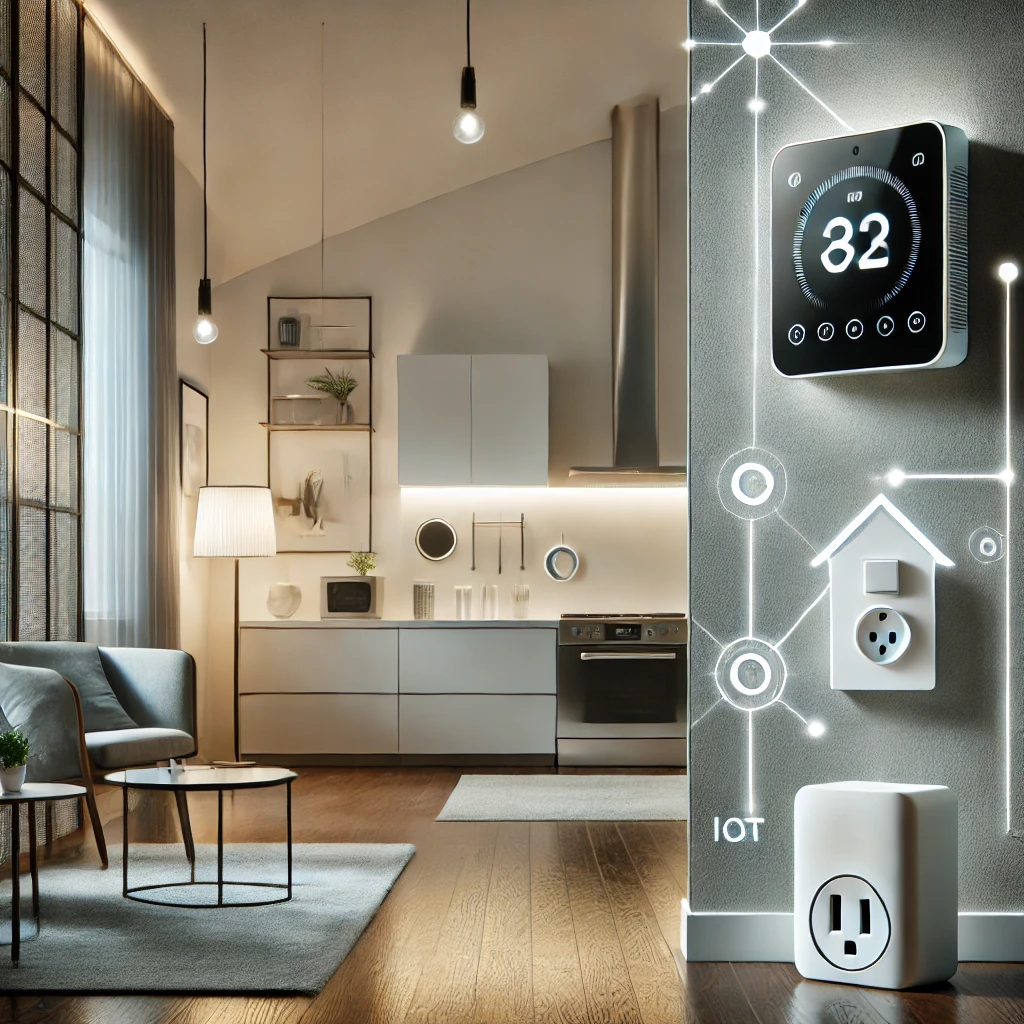
Energy efficiency or “Energy-saving smart devices” has become a critical aspect of modern living, driven by the need to reduce electricity bills and minimize environmental impact. As technology advances, smart home solutions provide a seamless way to manage energy consumption efficiently. Among these, smart thermostats, smart plugs, and smart lighting stand out as essential devices for creating a more sustainable home environment.
This article “Energy-efficient smart home Devices” delves into the key aspects of energy-efficient wireless smart home devices, exploring their functions, benefits, comparisons with traditional alternatives, challenges, future trends, and real-world applications. Whether you are looking to cut down on energy usage, integrate automation into your home, or adopt sustainable living practices, this guide offers in-depth insights into the growing world of smart home technology.
Background & Fundamentals
The Evolution of Smart Home Technology
Home automation has evolved significantly over the years, from basic programmable devices to sophisticated smart home ecosystems. With the rise of the Internet of Things (IoT), smart devices have transformed the way homeowners interact with their appliances. Wireless smart home systems facilitate effortless control, automation, and monitoring of energy usage.
The global smart home market is rapidly expanding, with experts predicting it will exceed $187 billion by 2025. Energy management solutions, including smart thermostats, plugs, and lighting, play a vital role in this growth, as they allow users to optimize power consumption and reduce waste.
How Smart Home Devices Improve Energy Efficiency
- Automated Adjustments – Devices adapt based on user behavior, schedules, or sensor data.
- Remote Control & Monitoring – Users can manage energy consumption through mobile apps and smart assistants.
- Detailed Energy Reports – Data insights help homeowners make informed decisions about energy use.
- Integration with Renewable Energy Sources – Smart devices complement solar panels and energy storage systems.
Key Components & Functionality
1. Smart Thermostats
Functionality
Smart thermostats help regulate indoor temperatures by learning user preferences and optimizing heating and cooling schedules. Models like Nest Learning Thermostat and Ecobee SmartThermostat leverage artificial intelligence to enhance energy efficiency.
Features
- Self-Learning Capabilities: Adapts to daily routines and preferences.
- Location-Based Adjustments: Uses geofencing to modify settings when occupants leave or return home.
- Energy Reports: Offers insights into heating and cooling patterns.
- Smart Home Integration: Compatible with platforms like Alexa, Google Assistant, and Apple HomeKit.
2. Smart Plugs
Functionality
Smart plugs provide remote control and automation for regular appliances, making it easier to manage energy consumption.
Features
- Wireless Control: Turn devices on/off via a smartphone app.
- Energy Usage Monitoring: Tracks consumption for better efficiency.
- Voice-Activated Commands: Works with Alexa, Google Assistant, and Siri.
- Custom Schedules & Automation: Allows pre-set operation times.
3. Smart Lighting
Functionality
Smart lighting solutions, such as Philips Hue and LIFX, offer adjustable lighting settings to enhance energy savings and convenience.
Features
- Dimming & Color Customization: Modify brightness and color temperature.
- Motion Sensors: Automatically switch lights on/off based on movement detection.
- Energy Monitoring: Tracks and reports lighting power consumption.
- Smart Controls: Manage via apps, voice assistants, or automated schedules.
Comparison & Alternatives
| Feature | Smart Thermostats | Smart Plugs | Smart Lighting |
|---|---|---|---|
| Energy Savings | High | Medium | Medium |
| Cost | Higher initial investment | Low-cost option | Moderate pricing |
| Ease of Installation | Requires some setup | Easy plug-and-play | Moderate setup |
| Integration | HVAC systems | Any electrical device | Light fixtures & lamps |
Alternative Options:
- Traditional Thermostats – Lower cost but lack smart automation.
- Basic Power Strips – No remote access or automation.
- Standard LED Bulbs – Energy-efficient but without smart control features.
Challenges & Limitations
- Initial Costs – The upfront investment for smart devices can be high, though long-term savings offset this.
- Compatibility Issues – Not all devices work seamlessly with every smart home ecosystem.
- Data Security & Privacy – IoT devices can be vulnerable to hacking if not properly secured.
- Dependence on Internet Connectivity – Smart devices require stable network connections for optimal performance.
Future Trends & Innovations
- AI-Driven Energy Management – Enhanced predictive analytics will further optimize energy consumption.
- 5G Connectivity – Faster and more reliable communication between devices.
- Sustainable Manufacturing – Increased focus on eco-friendly smart devices.
- Better Renewable Energy Integration – Smarter synchronization with solar panels and storage batteries.
Use Cases & Real-World Applications
Residential Homes
- Smart thermostats cut heating and cooling costs by 10-20% annually.
- Automated lighting schedules help homeowners reduce power consumption by up to 30%.
Businesses & Commercial Spaces
- Office spaces use automated lighting and climate control for optimized energy management.
- Smart plugs eliminate unnecessary standby power usage, significantly reducing overall electricity bills.
Hospitality & Hotels
- Motion-activated lighting improves guest experience while reducing energy waste.
- Smart thermostats ensure personalized comfort without excessive energy use.
Final Thoughts & Conclusion
Smart home technology is redefining energy efficiency, offering a practical way to reduce costs and promote sustainability. Smart thermostats, plugs, and lighting provide numerous benefits, including automation, convenience, and optimized energy use.
As advancements in IoT, AI, and connectivity continue, these devices will become even more sophisticated, making smart home technology an essential part of the energy-conscious household. Whether you’re an individual looking to cut expenses or a business seeking efficiency improvements, investing in smart energy solutions is a step toward a more sustainable future.
